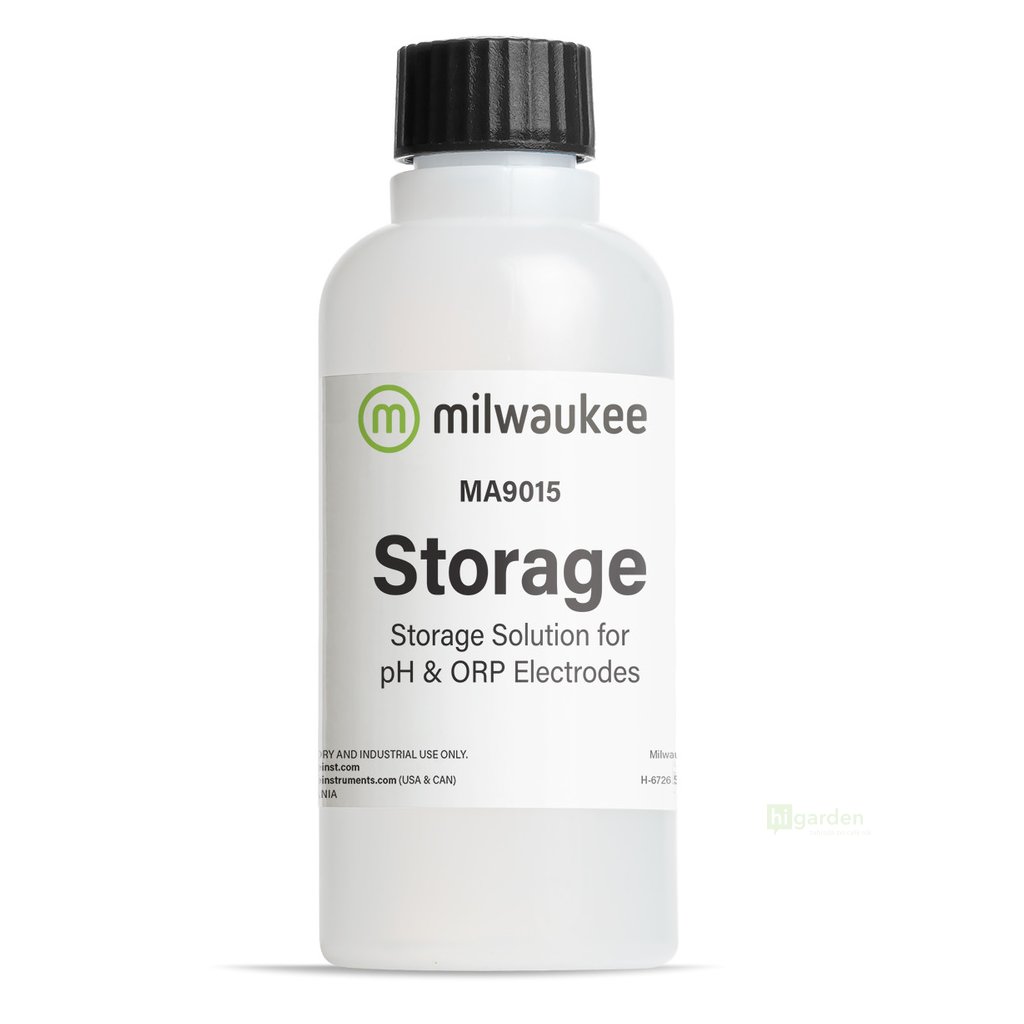Plants need certain soil conditions to thrive. The pH level marks the alkalinity or acidity of a substance - in our case, usually the nutrient solution or soil. If the environment is too acidic, some nutrients become unavailable to plants, which leads to deficiencies. If the solution becomes too alkaline, the nutrients become available in toxic amounts. Most plants prefer a slightly acidic environment (5,5 - 7), but it depends on the plant type. To know and maintain the preferred pH value, growers use pH meters.

Always read the instruction manual before using a pH meter - every manufacturer makes slightly different devices. Usually, it's simple:
- Place the electrode into the sample and press the “measure” button. Leave the probe in the sample for about 1-2 minutes until the reading stabilises.
- Press the “measure” button again to hold the reading on the meter.
- Rinse the electrode with distilled water and dry it after every use.
If you want the meter to work well, last longer and provide reliable data, store it properly and calibrate it often.
How often should you calibrate a pH meter?
First, we have to point out that there’s no universal answer to how often a pH meter needs calibration. The devices by different manufacturers need different handling, which is why we highly recommend thoroughly reading the user guide - it's the best place to start. The other thing to consider is how precise you need the readings to be. Calibrating the meter before every use is the best way to make the measurements exact.
How to calibrate a pH meter?
The equipment is simple: you need the calibration solution (or solutions), two (or three) small containers and the pH meter.
There are two options: single-point calibration and two-point calibration. The single-point calibration uses one solution with neutral pH (7). Two-point calibration is more precise but needs two buffers - one neutral (7 pH) and one acidic (4 pH) or alkaline (9,21 pH). Growers usually use a 7 and 4 solution because that’s the range they mostly measure in.
- Turn the pH meter on - every device needs time to „warm up” before use or calibration. It usually takes about half an hour - again, the user manual should have more precise information.
- Prepare two containers - one for the waste from cleaning the electrode and one for the calibration solution.
- Clean the electrode - take it out of the storage solution, rinse it with distilled water and dry it. Be gentle with the electrode because its membrane is very delicate.
- Prepare the calibration solutions (buffers) - pour them into clean containers and wait until they’re at the same temperature as the pH meter. Never let the solution sit for more than two hours.
Calibrating the pH meter
- Place the electrode into the 7pH buffer, and press the calibrate or measure button.
- Once the reading stabilises (usually after 1-2 minutes), calibrate the meter by pressing the calibrate or measure button again.
- Rinse the electrode with distilled water and dry it.
- Repeat the with a 4pH buffer for two-point calibration.
The most important part of a pH meter is the electrode, which usually consists of two membranes and an electrolyte. If the electrode dries, the meter loses accuracy and can stop working. To prevent it, keep the electrode in a storage solution.
If the electrode does dry out, soak it for several hours in a 7pH buffer, it should help.
How to make the pH meter last longer?
Everything breaks down eventually, but pH meters last longer when you store the electrode in a storage solution.
The measured samples sometimes remain in small amounts on the glass membrane, even after rinsing. A cleaning solution removes them safely without harming the device. 
Often check the electrolyte level in the electrode. If it’s low, it can cause inaccurate measurements, and you should refill it (if possible).
Pro tips:
- You don’t need to stir the buffer before measuring but if you do, stir all the other samples and solutions the same way.
- Instead of drying the electrode, dab it with a lint-free, clean paper towel or tissue (or the specialised cleaning tissues). Never rub it - static electricity and even the slightest pressure can damage the membrane.
- Make sure you always dip the whole electrode in the solution. It may seem obvious, but just the tip isn’t enough for a precise reading.
If you have questions about pH meters or pH measuring, don’t hesitate to contact us at info@higarden.eu. We’re looking forward to hearing from you!
We recommend these products:
More articles:



